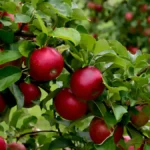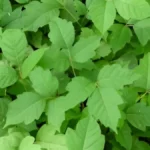In addition to keeping the soil and plant roots cool and preventing frost heave in the winter, mulch also keeps the soil wet, inhibits or blocks weeds, and improves the appearance of the garden bed and surrounding area. In technical terms, mulch is any substance applied to the soil’s surface. Additionally, certain varieties may enrich the soil with nutrients.
There will probably be a lot of advice given to you when you start growing your backyard garden. Mulching your garden is one that you can encounter frequently. It might be a helpful step for maintaining your lawn, flower bed, or vegetable garden. Learn about the types, benefits, and how to mulch garden.
What is mulch?
Mulch is a protective layer of material applied to the soil to assist in retaining moisture, controlling temperature, inhibiting weeds, and promoting soil health. There are two types of mulch: organic and inorganic. Organic materials, such as wood chips, straw, or compost, degrade and nourish the soil, and inorganic materials, such as plastic or gravel, offer long-term covering. Mulching is a popular gardening and agricultural method that promotes plant development while reducing care requirements.
Why mulching is essential for a thriving garden
Mulching is a highly successful gardening strategy that improves soil health, retains moisture, suppresses weeds, and controls soil temperature. By selecting the right type of mulch and spreading it correctly, you may boost plant development and the overall beauty of your garden.
Top benefits of using mulch in your garden
1. Moisture and water conservation
Mulch’s capacity to hold onto soil moisture is one of its main benefits. Mulch guarantees plants a steady water supply by lowering evaporation, which is particularly advantageous in hot and dry conditions. This lessens the need for frequent watering and keeps plants alive during dry spells.
2. Weed control
A thick layer of mulch works as a natural weed barrier, keeping weed seeds from getting sunlight. Organic mulches, such as bark or straw, gradually disintegrate and enhance soil structure while preventing undesirable plant growth.
3. Soil temperature control
Mulch acts as an insulator, keeping the soil cool in summer and warm in winter. This temperature control shields plant roots from harsh weather conditions, decreasing stress and fostering better development.
4. Better soil health and fertility
Organic mulches decompose over time, supplying the soil with critical nutrients. This breakdown process increases microbial activity, soil aeration, and overall soil fertility.
5. Erosion control
By stabilizing soil particles and lowering surface runoff, mulch shields soil from erosion caused by wind and water. This is especially helpful in gardens that slope or in places that get a lot of rain.
6. Increased aesthetic appeal
In addition to its practical benefits, mulch improves the visual appeal of gardens by giving them a nice and tidy appearance. Decorative mulches, including colored wood chips or crushed stone, help to create a polished landscape design.
Best time to mulch garden
The optimal times to mulch a garden are early spring and late fall. Mulching the soil once it has warmed up in the spring helps to retain moisture, reduce weeds, and encourage healthy plant development. Mulching in the fall protects plant roots from harsh temperatures and helps to preserve soil moisture during the winter. Avoid mulching too early in the spring, since it can trap cold air in the soil and slow plant development.
How to mulch garden
To mulch a garden, first remove weeds and loosen the soil. Then, sprinkle a 2-4 inch layer of mulch around the plants, keeping it a few inches away from the stems to avoid rot. For extra nutrients, use organic mulch such as wood chips, straw, or compost, while inorganic mulch such as gravel provides long-term covering. Replenish mulch as needed to retain its advantages, which include moisture retention, weed control, and soil insulating.
Types of mulch for your garden
Choosing the correct mulch kind is determined by your gardening requirements, soil type, and the plants you are cultivating. Here are the most popular types:
1. Organic mulches
- Bark Mulch: Excellent for flower gardens and walks; slow to degrade.
- Straw is ideal for vegetable gardens since it maintains moisture and minimizes soil compaction.
- Grass clippings add nitrogen to the soil, but they should be placed in thin layers.
- Leaves are free and easily accessible; shredded leaves decompose faster and improve soil quality.
- Compost increases soil structure while also providing nutrients.
- Wood chips are long-lasting and ideal for moisture retention.

2. Inorganic mulches
- Gravel and Stones: Ideal for rock gardens and paths, with great drainage.
- Rubber Mulch: Made from recycled tires, it is durable and perfect for playgrounds.
- Plastic sheeting is effective in weed control but does not enhance soil quality.
- Landscape fabric is frequently used under other mulches to inhibit weed growth.
Conclusion:
Mulching is a simple yet effective gardening strategy that improves soil health, plant development, and garden aesthetics. By selecting the appropriate mulch kind, spreading it appropriately, and maintaining it over time, you can produce a flourishing, low-maintenance garden that thrives all year.
Certainly! If you’d like to learn more, please consider following our WhatsApp Channel, Facebook, Instagram, YouTube, Twitter, and Pinterest.
A frequently asked questions:
Q1: What is the difference between garden soil and mulch?
A1: Garden soil is the nutrient-rich foundation on which plants develop, giving important nutrients and root support, whereas mulch is a protective covering applied on top of the soil to preserve moisture, discourage weeds, and regulate temperature. Unlike soil, mulch does not immediately promote plant growth but does improve soil health over time.
Q2: What is the proper way to mulch?
A2: Mulch should be applied in a 2-4 inch layer over the soil, keeping it a few inches away from plant stems to avoid rot. Choose organic or inorganic mulch based on your garden’s requirements, and refill it as required to keep its advantages.
Q3: How to remove old mulch?
A3: To remove old mulch, loosen and gather it with a rake or shovel, then discard or compost it if it is organic and decomposed. When reapplying fresh mulch, remove any compacted layers to allow air and water to enter the soil.



